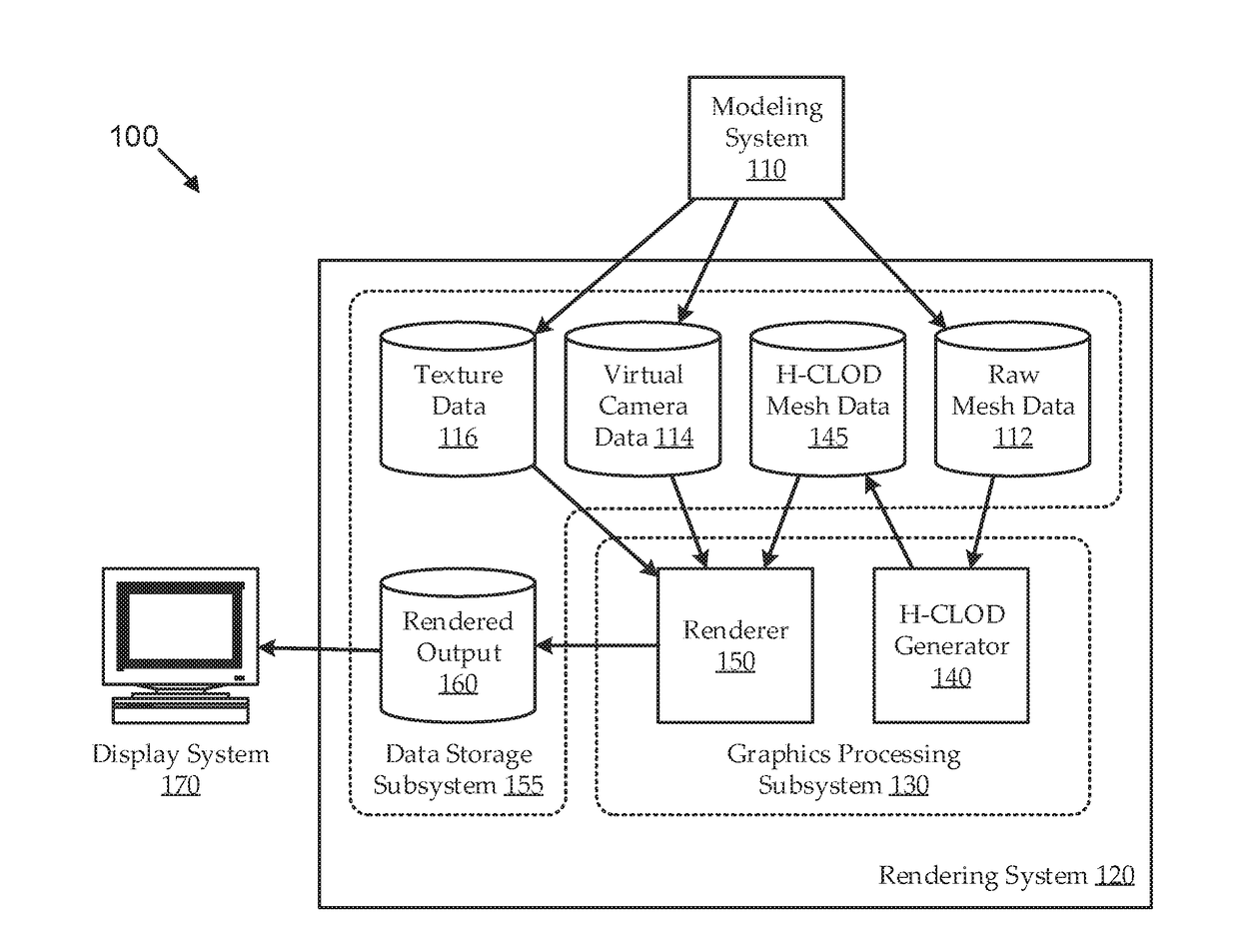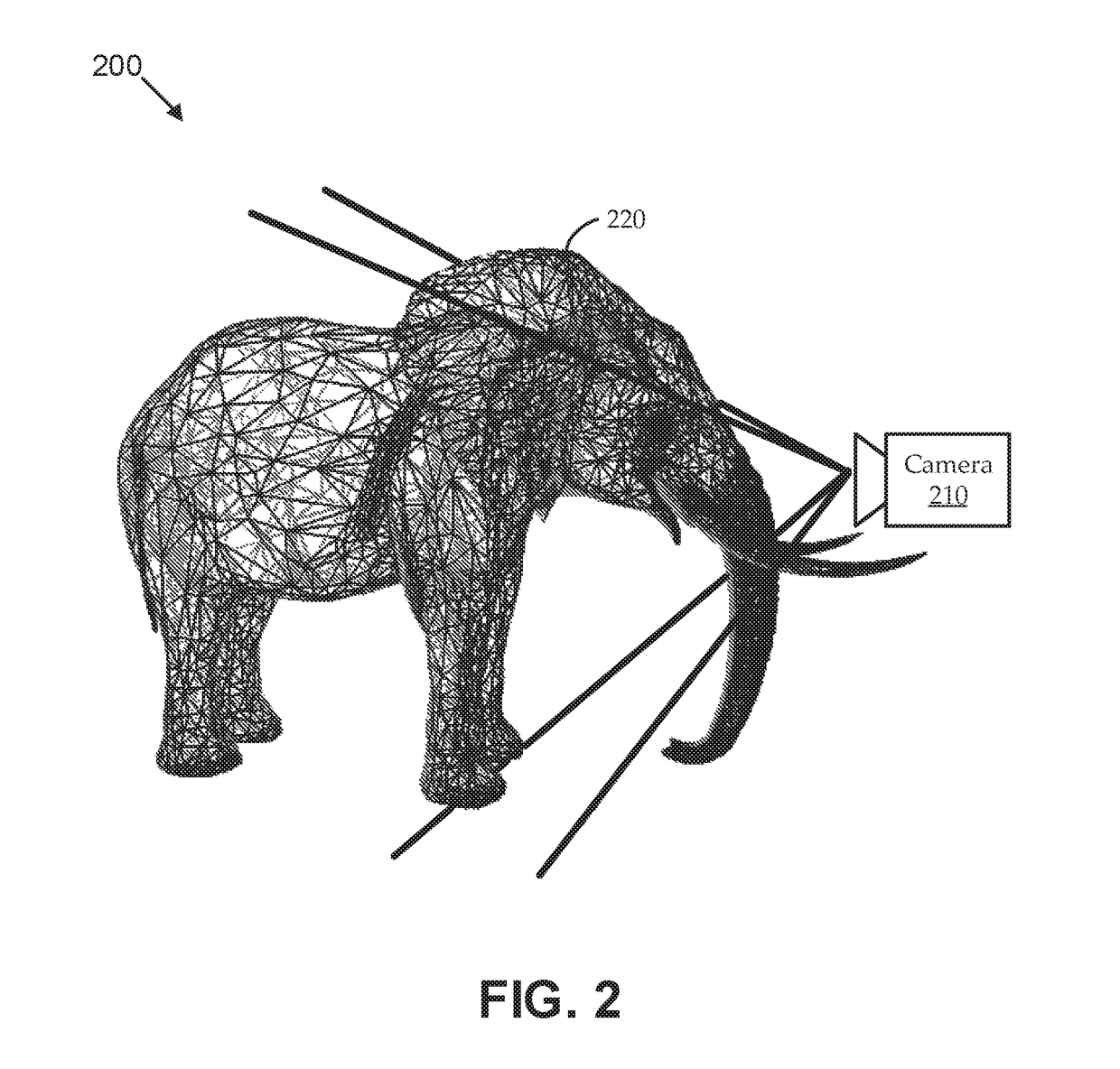Hierarchical continuous level of detail for three-dimentional meshes
a three-dimensional mesh and detail layer technology, applied in the field of graphic processing, can solve the problems of large amount of computing resources involved in rendering, substantially to the number of primitives involved, and complex rendered scenes, and achieve the effect of simplifying the parent mesh accounting for inherited splitting planes and reducing visual artifacts
- Summary
- Abstract
- Description
- Claims
- Application Information
AI Technical Summary
Benefits of technology
Problems solved by technology
Method used
Image
Examples
Embodiment Construction
[0033]In the following description, numerous specific details are set forth to provide a thorough understanding of various embodiments. However, one having ordinary skill in the art should recognize that the invention can be practiced without these specific details. In some instances, circuits, structures, and techniques have not been shown in detail to avoid obscuring embodiments.
[0034]In three-dimensional computer graphics environments, objects in a scene are typically modeled as three-dimensional meshes made up of primitives (e.g., triangles or other polygons into coordinate points connected by edges). Rendering and displaying a three-dimensional object can often involve large numbers of computations to determine locations of, and complex interactions with, those coordinate points and edges, and the faces formed therefrom. Various techniques can be used to reduce the complexity of the meshes, thereby reducing the computational intensity involved in rendering and displaying the ob...
PUM
 Login to View More
Login to View More Abstract
Description
Claims
Application Information
 Login to View More
Login to View More - R&D
- Intellectual Property
- Life Sciences
- Materials
- Tech Scout
- Unparalleled Data Quality
- Higher Quality Content
- 60% Fewer Hallucinations
Browse by: Latest US Patents, China's latest patents, Technical Efficacy Thesaurus, Application Domain, Technology Topic, Popular Technical Reports.
© 2025 PatSnap. All rights reserved.Legal|Privacy policy|Modern Slavery Act Transparency Statement|Sitemap|About US| Contact US: help@patsnap.com



